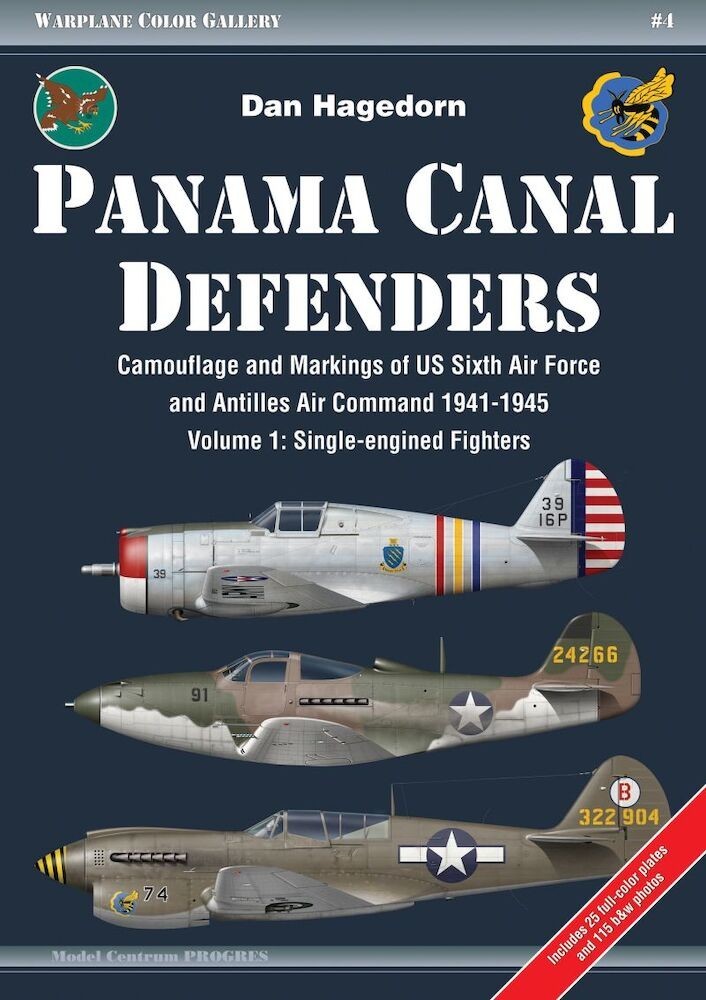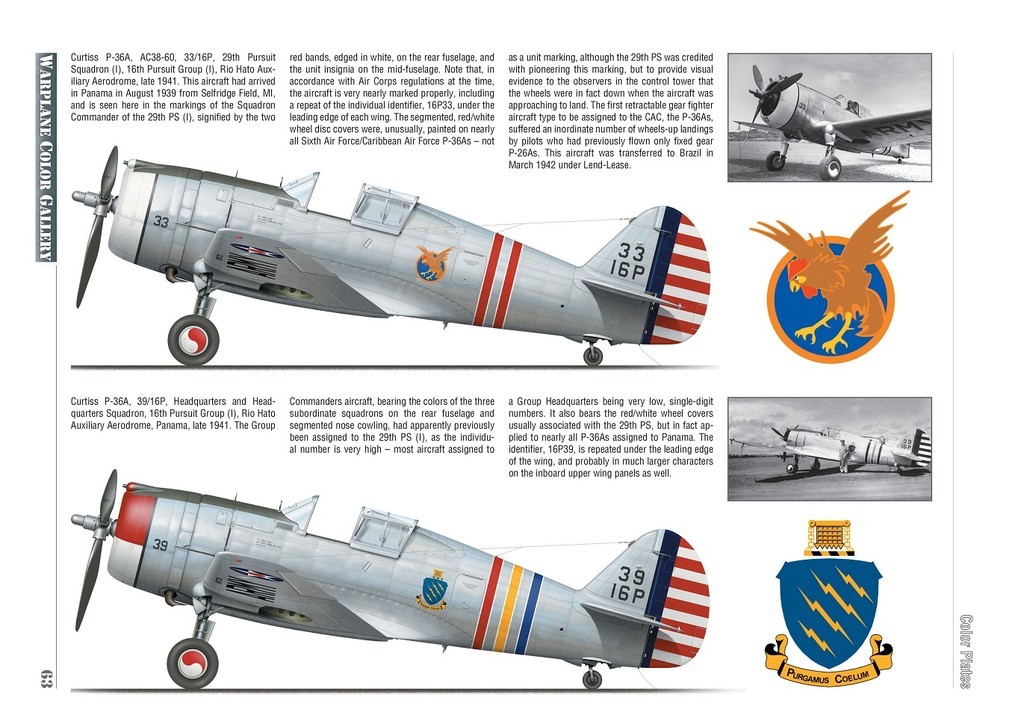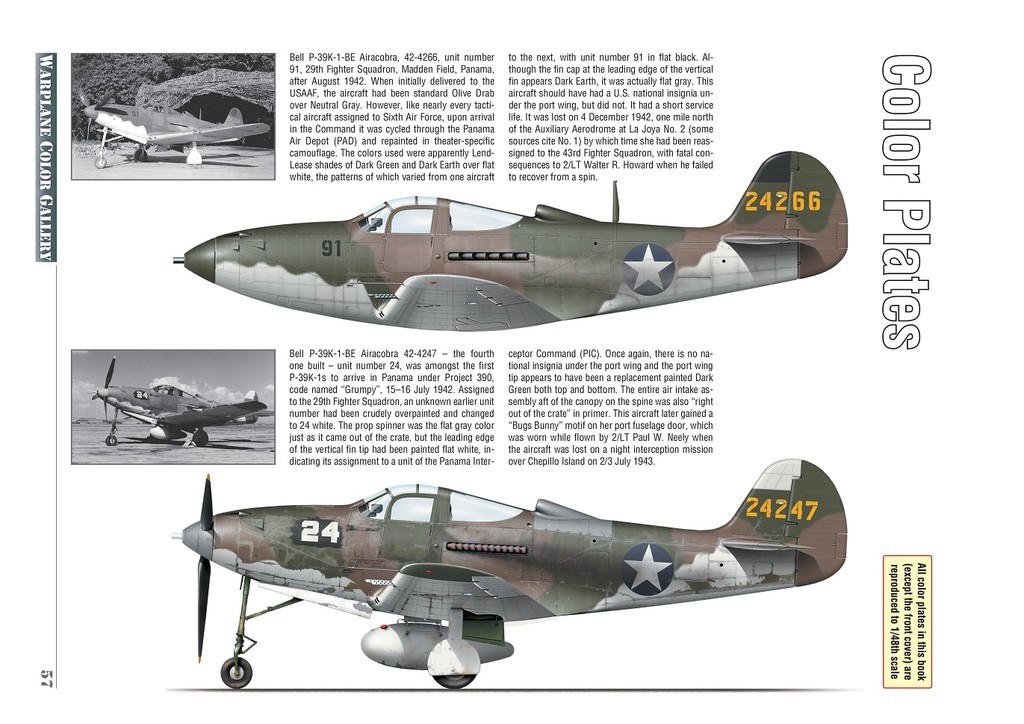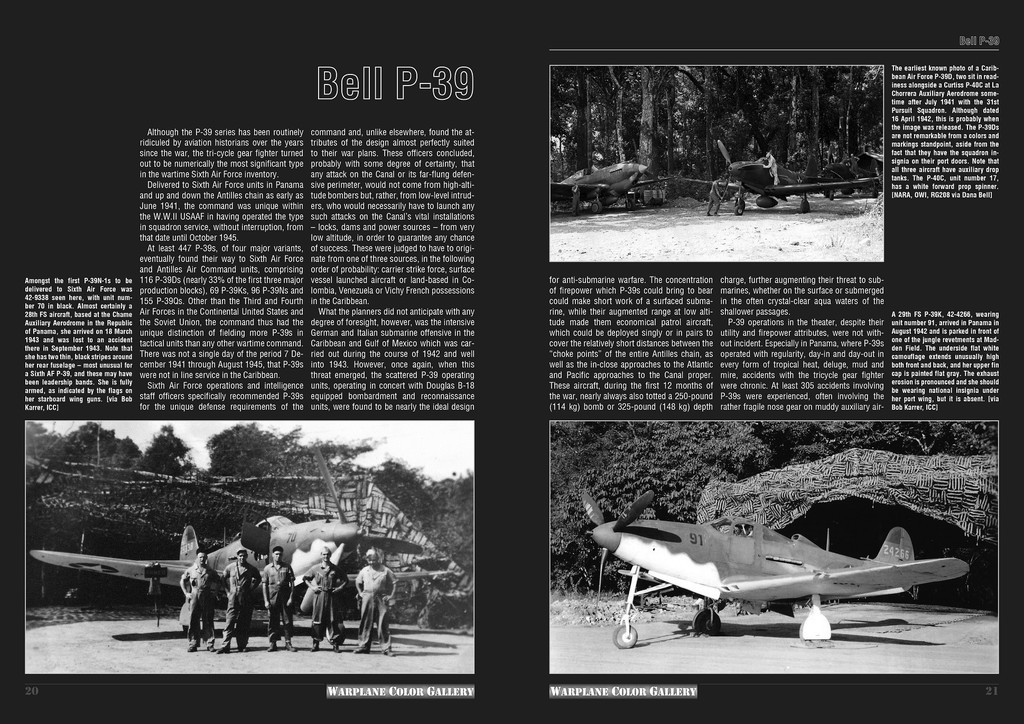PANAMA CANAL DEFENDERS - Camouflage and Markings of US Sixth Air Force and Antilles Air Command 1941-1945
Volume 1: Single-engined Fighters
Autore: Dan Hagedorn
Codice: 825020004
Questo primo volume, che verrà seguito da altri, descrive in dettaglio la vasta gamma di aerei impiegati per la difesa del Canale di Panama prima e durante la seconda guerra mondiale.
---
This first volume in a multi-volume set describes in detail the extraordinary array of classic aircraft that deployed to defend the vital Panama Canal and its approaches during W.W.II. While primarily charged with defending the vital Canal, the tropical warriors were also plunged into the shooting war that soon saw German and Italian submarines rampaging through the Caribbean. During the first 18 months following Pearl Harbor, the submarine offensive nearly severed the vital oil lifeline from the Maracaibo, Venezuela fields. The aircraft and units of the Sixth Air Force and a regional offshoot, the Antilles Air Command, created to deal specifically with the submarine menace.
The defenders of the Canal soon realized that this vast and largely over-water operating area demanded camouflage for its aircraft that the standard, prescribed USAAF mix did not provide. As a result, for the first two full years of the war, Sixth Air Force leaders evolved markings unique within the Army Air Forces and, for the first time, a coherent description of these often-exotic schemes are detailed in this ground-breaking series. But besides the overall schemes applied, Sixth Air Force and Antilles Air Command crews, nearly always operating in squadron-size elements or smaller, saw no utility in the unit code identifiers applied to USAAF aircraft in Europe and the Pacific, where large formations required a means of identifying members of individual operating units. Instead, they relied upon a system of so-called “unit numbers” and color coding of easily recognizable aircraft components, such as prop spinners, fin tips and the individual unit numbers themselves.
---
The culmination of more than 50-years of research, this first volume in a multi-volume set describes in detail, for the first time, the extraordinary array of classic aircraft that deployed to defend the vital Panama Canal and its approaches during World War II. Unlike their combat brethren in the European and Pacific theaters, the units, aircraft, and airmen of the Sixth Air Force – often cited as the "Forgotten Air Force" – have been all but ignored in the vast body of literature that has been published since the war.
While primarily charged with defending the vital Canal which, during the first year of America's war was viewed as almost certainly the next obvious target of Axis aggression from both the Atlantic and Pacific approaches, the tropical warriors were also plunged into the shooting war that soon saw German and Italian submarines rampaging through the Caribbean. During the first 18 months following Pearl Harbor, unbeknownst to the average Allied citizen on the home front, the submarine offensive nearly severed the vital oil lifeline from the Maracaibo, Venezuela fields, and the equally priority bauxite mines in Surinam, a mineral needed to make aluminum. More than 330 surface vessels were sunk in the Caribbean and its approaches during that period, and the aircraft and units of the Sixth Air Force and a regional offshoot, the Antilles Air Command, created to deal specifically with the submarine menace, saw hitherto undocumented combat in one-on-one actions that have eluded historians.
Faced with defending a huge geographic region, stretching from Atkinson Field, British Guyana on the east, up through the entire Antilles chain to Cuba, west through the Caribbean to the Canal itself, and then up and down the Central American and mainland South American landmass from Guatemala City to Talara, Peru, and Salinas, Ecuador – the extremely dispersed units of Sixth Air Force anchored their western defenses in the remote and mysterious Galapagos Islands, far to the west. The defenders of the Canal soon realized that this vast and largely over-water operating area demanded camouflage for its aircraft that the standard, prescribed USAAF mix did not provide. As a result, for the first two full years of the war, Sixth Air Force leaders evolved markings unique within the Army Air Forces and, for the first time, a coherent description of these often-exotic schemes are detailed in this ground-breaking series. But besides the overall schemes applied, Sixth Air Force and Antilles Air Command crews, nearly always operating in squadron-size elements or smaller, saw no utility in the unit code identifiers applied to USAAF aircraft in Europe and the Pacific, where large formations required a means of identifying members of individual operating units. Instead, they relied upon a system of so-called "unit numbers" and color coding of easily recognizable aircraft components, such as prop spinners, fin tips, and the individual unit numbers themselves.
This book also decribes the activities in the Dutch Antilles and Surinam, the only not occupied Dutch territories during WW2!
INGLESE
25 tavole a colori e 115 foto in bianco e nero
64
21 x 30





